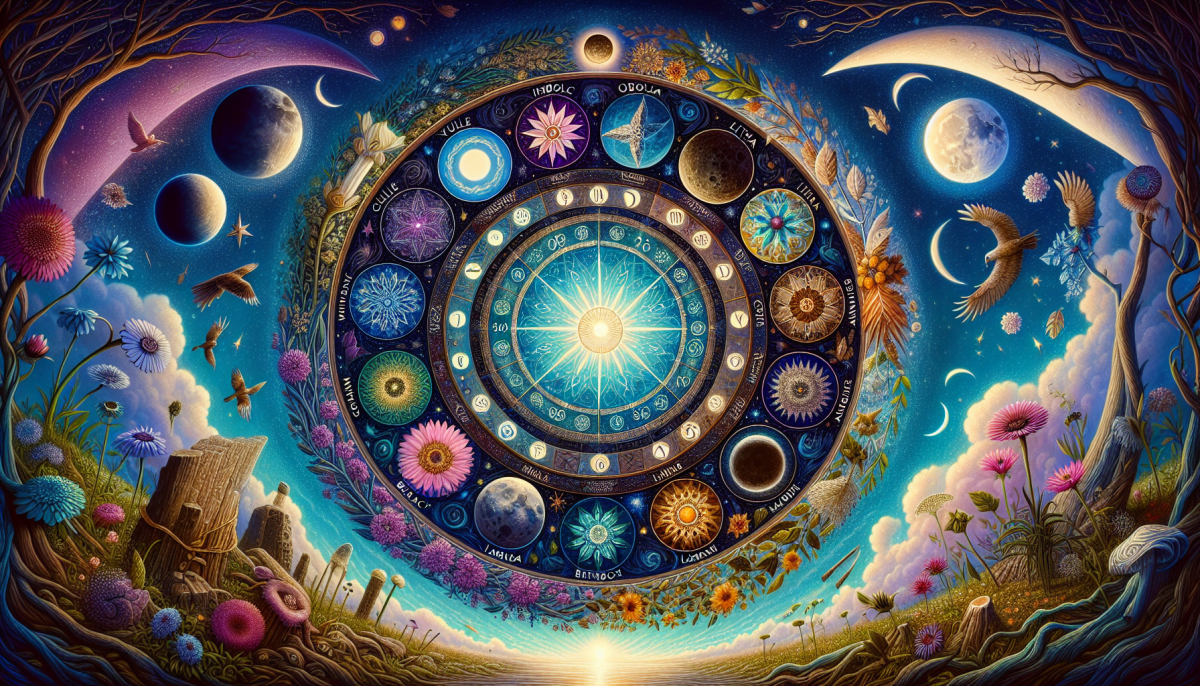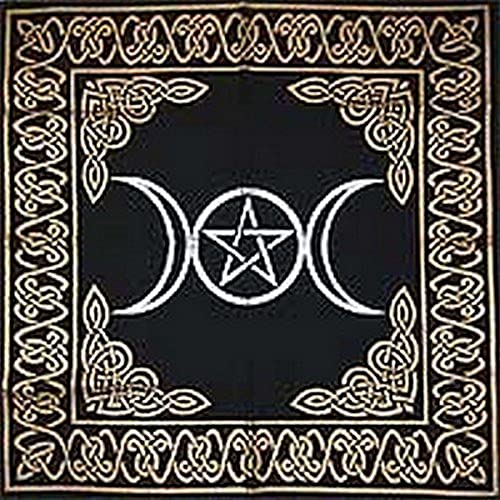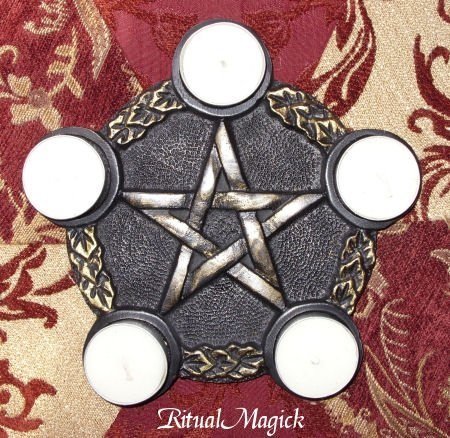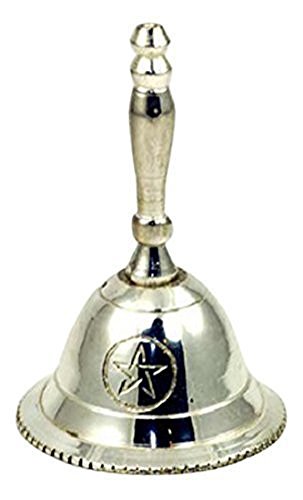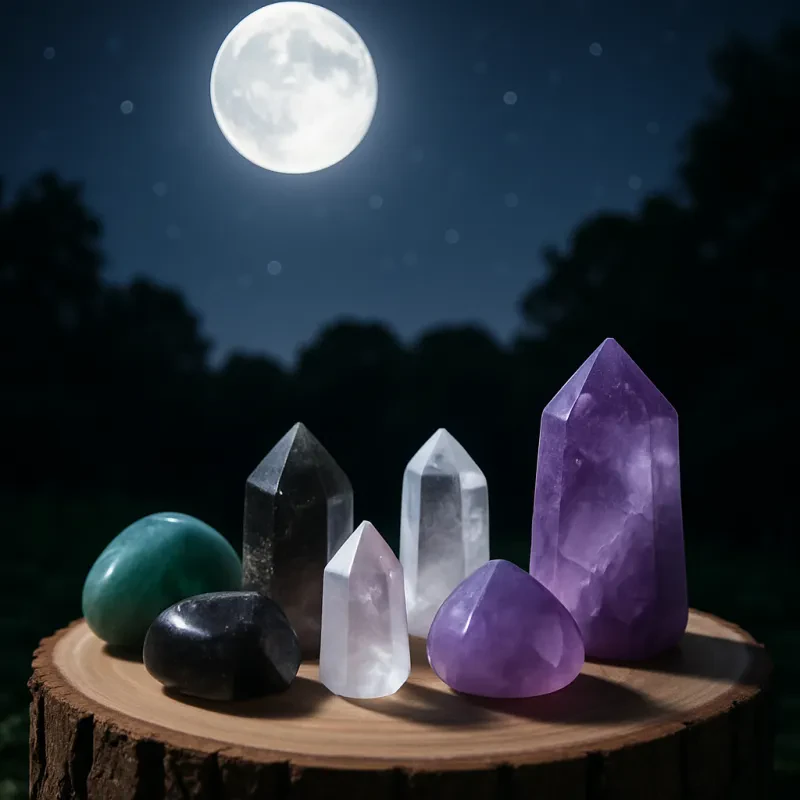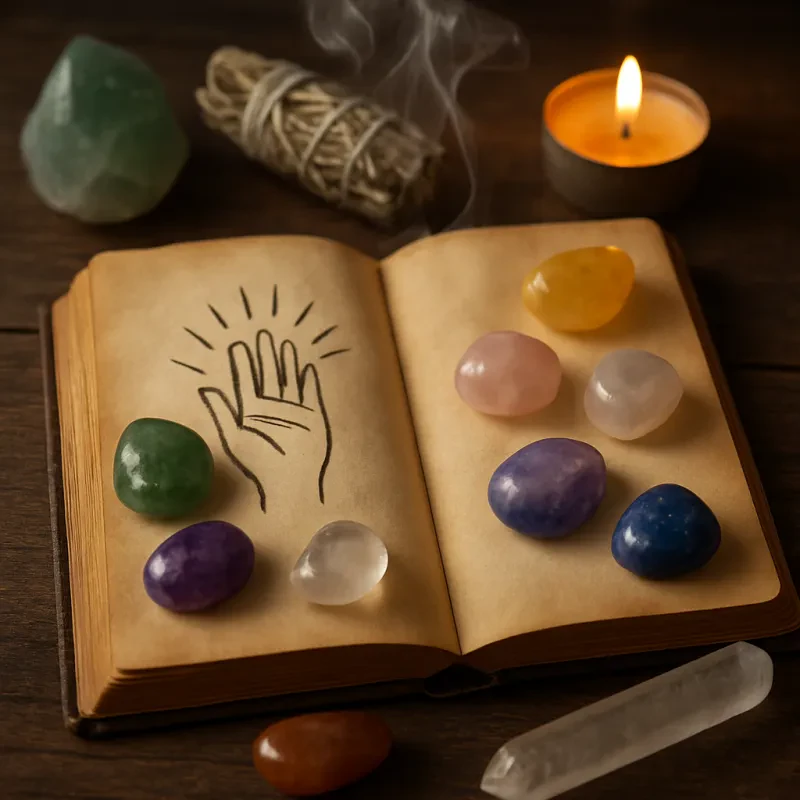The Wheel of the Year holds a special place in Wiccan and Pagan traditions, guiding practitioners through the ever-changing seasons and natural cycles. This ancient concept has an influence on how we connect with nature, celebrate life's milestones, and honor the divine. We find ourselves drawn to the rich tapestry of rituals, correspondences, and spiritual practices that make up this pagan calendar, offering a profound way to align our lives with the rhythms of the Earth.
In this guide, we'll explore the origins of the Wheel of the Year and delve into the eight Sabbats that mark its turning. We'll examine how these pagan festivals have shaped Wiccan beliefs and practices over time. Additionally, we'll provide insights on celebrating pagan holidays and these special days, from Samhain to Lammas, and discuss their significance in modern paganism. By the end, you'll have a deeper understanding of this cyclical journey and how it can enrich your spiritual path.
Origins of the Wheel of the Year
The Wheel of the Year, a central concept in modern Pagan and Wiccan traditions, has its roots in ancient practices and beliefs. This cyclical calendar, marking eight festivals throughout the year, has an influence on how practitioners connect with nature and celebrate life's milestones. To understand its significance, we need to explore its origins and evolution. Please understand that the Wheel of the year 2024 is similar but each year is different.
Ancient Pagan Roots
The concept of cyclical time and seasonal celebrations is not new. Ancient civilizations, particularly in Europe, recognized the profound impact of Earth's cycles on their daily lives. The Celts, for instance, marked four major festivals: Beltane, Lughnasadh, Samhain, and Imbolc [1]. These celebrations were deeply tied to agricultural practices and the changing seasons.
Archeological evidence, such as Stonehenge in the United Kingdom, suggests that ancient peoples observed solstices and equinoxes, further highlighting the importance of celestial events in their spiritual and practical lives [2]. These observances formed the foundation of what would later become the Wheel of the Year.
Modern Wiccan Adaptations
The Wheel of the Year as we know it today is a relatively modern concept, developed in the mid-20th century. Gerald Gardner, often called the father of modern Wicca, and Ross Nichols, founder of the Order of Bards, Ovates and Druids, have a significant influence on shaping this calendar .
Legend has it that Gardner and Nichols harmonized an eight-fold calendar during a naturist retreat, combining the four solar stations (solstices and equinoxes) with the four midpoint festivals. This synthesis brought together various pagan traditions into a cohesive framework.
The phrase "Wheel of the Year" came into use by the mid-1960s to describe this annual cycle of eight observances. In 1974, Aidan Kelly, a prominent Wiccan, gave names to the summer solstice (Litha) and equinox holidays (Ostara and Mabon), which were then promoted through Timothy Zell's Green Egg magazine .
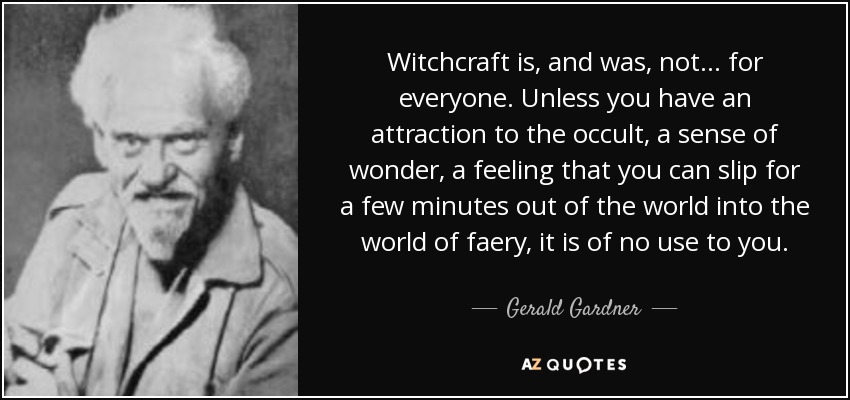
Significance in Neopaganism
In modern Pagan spirituality, the Wheel of the Year transcends its agricultural beginnings to embody a rich tapestry of pagan celebrations, spiritual meaning and practice. It serves as a vibrant guide for living in harmony with the Earth's natural rhythms, offering a framework for personal and communal growth.
The Wheel of the Year has a significant influence on contemporary Pagan practices. It's a powerful symbol of the cycle of life, death, and rebirth, reminding practitioners of the impermanence of existence and the beauty of change. By aligning with these natural cycles, Pagans find a deeper sense of balance and interconnectedness with the world around them.
It's important to note that while the Wiccan Wheel of the Year is widely observed in modern Paganism, it's not universal. Different Pagan holidays and traditions, witch holidays, satanic holidays and even pagan New Year, may have their own calendars and observances. For instance, Hellenic Pagans celebrate festivals based on ancient Greek traditions, which may differ from or complement the Wheel of the Year [3].
The Witches Wheel of the Year, with its blend of ancient wisdom and modern interpretation, continues to guide many Pagans through the seasons. It offers a way to connect with nature, honor the past, and find meaning in the cyclical nature of existence. As we explore each Sabbat in detail, we'll see how this ancient-yet-modern calendar continues to resonate with practitioners today.
The Eight Sabbats
The Wheel of the Year, a central concept in Wiccan and many Pagan traditions, is made up of eight seasonal festivals known as Sabbats. These celebrations mark the cyclical journey of the Earth around the sun and have a significant influence on how practitioners connect with nature and honor the changing seasons.
Solar Festivals
The solar festivals, also known as the Quarter Days or Lesser Sabbats, are tied to the sun's position in the sky and mark the solstices and equinoxes. These four Sabbats include:
-
Yule (Winter Solstice): Celebrated around December 20-23 in the Northern Hemisphere, Yule marks the longest night and shortest day of the year. It's a time to welcome the return of the light and celebrate renewal and hope.
-
Ostara (Spring Equinox): Occurring around March 19-23, Ostara heralds the arrival of spring. It's a festival of fertility, birth, and renewal, symbolizing the balance between day and night.
-
Litha (Summer Solstice): Taking place around June 20-23, Litha celebrates the longest day and shortest night of the year. It's a joyous occasion marking the height of the sun's power.
-
Mabon (Autumn Equinox): Falling around September 20-23, Mabon is a time of thanksgiving for the harvest and a recognition of the balance between light and dark as we transition into the darker half of the year.
Fire Festivals
The Fire Festivals, also known as the Cross-Quarter Days or Greater Sabbats, fall between the solar festivals and are often associated with agricultural and pastoral cycles. These four Sabbats include:
-
Imbolc: Celebrated on February 1-2, Imbolc marks the first stirrings of spring. It's a time for purification, renewal, and honoring the goddess Brigid.
-
Beltane: Observed on April 30 or May 1, Beltane is a joyful celebration of fertility and the height of spring. It's often marked by bonfires and festivities.
-
Lughnasadh (Lammas): Taking place on August 1-2, Lughnasadh is the first harvest festival. It's a time to give thanks for the abundance of the earth and to reflect on personal growth.
-
Samhain: Celebrated on October 31 or November 1, Samhain marks the Celtic New Year and the final harvest. It's believed to be when the veil between the worlds is thinnest, making it a time to honor ancestors and reflect on the cycle of life and death.
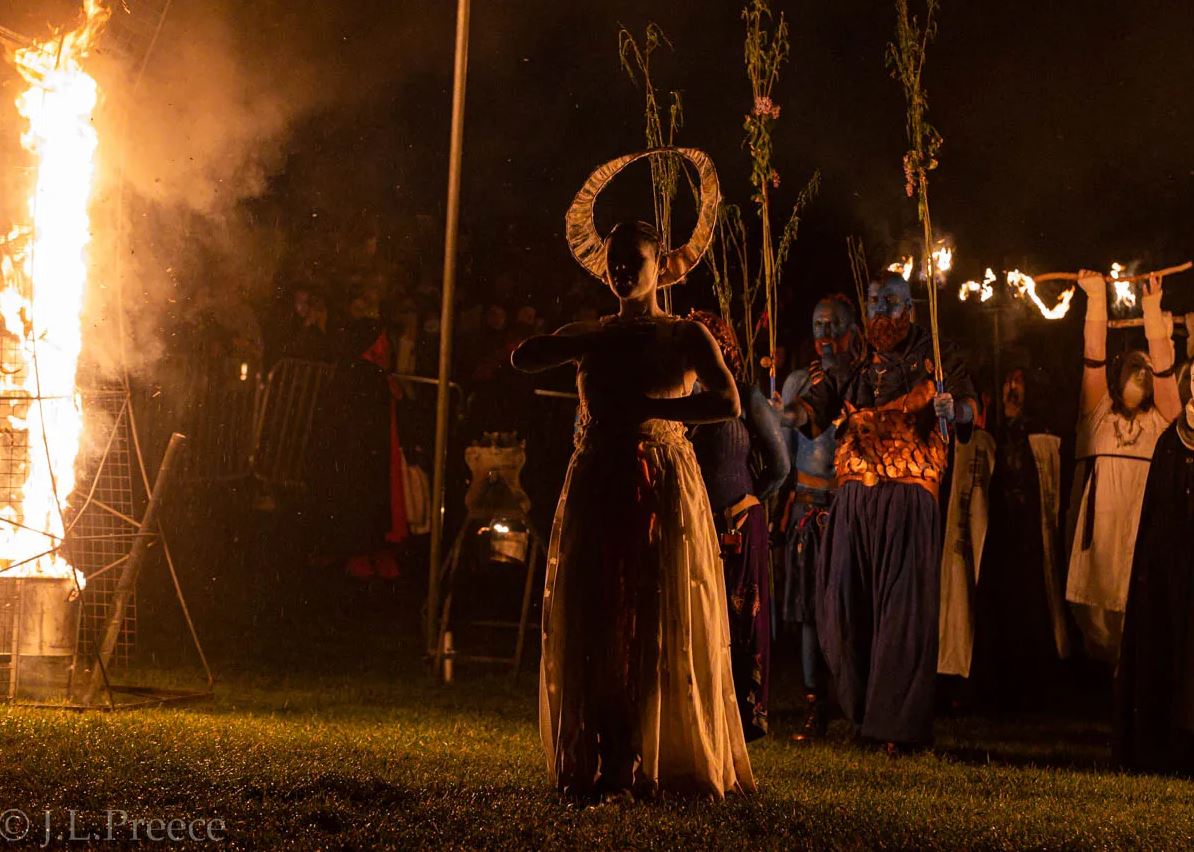
Seasonal Correspondences
Each Sabbat has its own unique correspondences, reflecting the energies and themes of the season. These correspondences can include specific colors, herbs, foods, and activities that align with the festival's purpose. For example, Imbolc might be associated with the color white, herbs like rosemary and bay, and activities such as candle-making or spring cleaning.
Understanding these correspondences can enhance the celebration of the Sabbats and deepen one's connection to the Wheel of the Year. Many Wiccans and Pagans use these correspondences in their rituals and decorations, creating a rich tapestry of symbolism that reflects the cyclical nature of the Earth's journey around the sun.
By observing these eight Sabbats, practitioners of Wicca and other Pagan traditions align themselves with the natural rhythms of the Earth. The Wheel of the Year provides a framework for spiritual growth, reflection, and celebration, reminding us of our connection to the cycles of nature and the ever-turning wheel of life, death, and rebirth.
Celebrating the Sabbats
As we journey through the Wheel of the Year, each Sabbat offers a unique opportunity to connect with nature's rhythms and honor the changing seasons. Celebrating these pagan festivals allows us to align ourselves with the natural world and deepen our spiritual practice. Let's explore some meaningful ways to observe these special days.
Rituals and Traditions
Rituals play a crucial role in celebrating the Sabbats, helping us mark the passage of time and honor the energies of each season. For Samhain, we often perform rituals to commune with our ancestors and engage in shadow work. We might leave offerings for the departed or host a silent supper to honor their memory. During Yule, we focus on rituals of reflection, cleansing, and hope as we welcome the return of the sun.
As we move into Imbolc, our rituals center around awakening and protection. This is an ideal time for house blessings and spiritual cleansing. We might craft dream sachets or start new projects to align with the energy of new beginnings. When Ostara arrives, we shift our focus to rituals of fertility, creativity, and emergence. Many practitioners engage in egg divination (oomancy) or charge seeds with intentions for planting at Beltane.
Beltane rituals often revolve around prosperity, fertility, and strengthening relationships. We might dance around a maypole or jump over fires to invite blessings into our lives. As we reach Litha, the summer solstice, our rituals turn to protection and love. We make protective amulets, cleanse with water, and manifest our intentions with herbs.
Wicca Wicks Colored Candles 48pk
Brighten your rituals and intentions with our vibrant selection of colored candles designed for all your magical needs
Product information
$27.95
Product Review Score
4.19 out of 5 stars
65 reviewsProduct links
Altar Decorations
Creating altars for each Sabbat is a beautiful way to honor the Wheel of the Year. These sacred spaces serve as focal points for our rituals and reflections. For Yule, we might adorn our altar with evergreen branches, holly, and mistletoe, symbolizing eternal life and protection. Candles in colors like red, green, and gold represent the returning light.
As we move into Imbolc, our altar might feature white flowers, candles, and symbols of Brigid, such as a Brigid's cross. For Ostara, we could decorate with painted eggs, spring flowers, and seeds to represent new beginnings. Beltane altars often burst with colorful flowers, ribbons, and symbols of fertility like acorns or fig branches.
During Litha, we might create a solar wheel or sun catcher for our altar, along with summer fruits and sun-dried herbs. As we transition into Lammas, our altar could showcase freshly baked bread, corn dollies, and the first fruits of the harvest. Mabon altars often feature apples, grapes, and autumn leaves, reflecting the balance of the equinox.
Seasonal Foods
Food plays a significant role in Sabbat celebrations, connecting us to the Earth's bounty and the cycles of growth and harvest. During Samhain, we might enjoy seasonal dishes 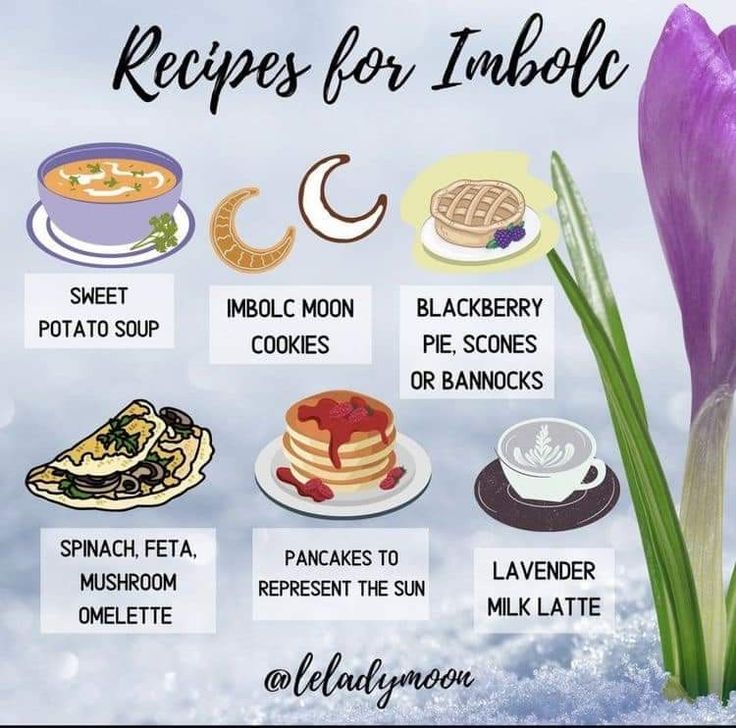 like pumpkin recipes, stews, and soul cakes. Yule feasts often include mulled ciders, roasted meats, and winter squash.
like pumpkin recipes, stews, and soul cakes. Yule feasts often include mulled ciders, roasted meats, and winter squash.
As we welcome Imbolc, we might prepare dishes with dairy, eggs, and early spring vegetables. Traditional foods include Irish colcannon, made with potatoes and leeks. Ostara celebrations often feature eggs, leafy greens, and spring fruits. We might bake hot cross buns or honey cakes to honor the season.
Beltane feasts typically include dairy products, oat cakes, and the first fruits of spring like cherries and strawberries. As we reach Litha, we enjoy summer fruits and vegetables, along with sun tea and mead. Lammas celebrations center around grains and freshly baked bread, symbolizing the first harvest.
By incorporating these rituals, altar decorations, and seasonal foods into our Sabbat celebrations, we deepen our connection to the Wheel of the Year and the natural world around us. Each festival offers a unique opportunity to reflect, grow, and honor the ever-turning cycle of life.
Conclusion
The Wheel of the Year offers a profound way to connect with nature's rhythms and honor the changing seasons. By observing the eight Sabbats, practitioners find a deeper understanding of life's cycles and their place within them. This ancient-yet-modern calendar has a significant influence on how many Wiccans and Pagans approach their spiritual practice, providing a framework to reflect, celebrate, and grow throughout the year.
As we journey through the Wheel of the Year, we're reminded of the constant ebb and flow of life, death, and rebirth. Each Sabbat brings its own unique energy and opportunities to align ourselves with the natural world. Whether through rituals, altar decorations, or seasonal foods, celebrating these festivals helps us to stay connected to the Earth and to ourselves. In the end, the Wheel of the Year serves as a powerful tool to enrich our spiritual paths and deepen our connection to the world around us.
FAQs
What are the key festivals included in the Wheel of the Year?
The Wheel of the Year comprises eight key festivals or Sabbats that correspond to the seasonal changes throughout the year. These are Samhain, Yule, Imbolc, Ostara, Beltane, Litha, Lammas (also known as Lughnasadh), and Mabon. Each festival carries its distinct rituals and cultural significance.
What is the significance of the Wheel of the Year in Wicca?
The Wheel of the Year symbolizes the cycle of the seasons and includes eight significant Sabbats that are celebrated in Neo-Paganism and Wicca. These consist of four solar festivals—Winter Solstice, Spring Equinox, Summer Solstice, and Fall Equinox—and four seasonal festivals that mark important times of seasonal transition.
How do practitioners typically observe the Wheel of the Year?
Observances of the Wheel of the Year can differ, but common practices include making sacrificial offerings, holding feasts, and exchanging gifts, particularly during the Midwinter celebrations. Decorative practices such as bringing evergreen plants like holly, ivy, mistletoe, yew, and pine into the home and decorating trees are also widespread.
What do the Sabbats symbolize in pagan traditions?
In pagan traditions, the Sabbats are viewed as times to celebrate the natural processes of life, death, and rebirth as observed through Earth’s cycles. These festivals often relate to historical agricultural and farming cycles and are seen as a way to honor these ancient rhythms of nature.
References
[1] - https://seawitchbotanicals.com/blogs/swb/the-wheel-of-the-year-explained?srsltid=AfmBOorcq09kOghu1nrNH_r-CK0h4CKB2lb4QGqAGXevHikVK8ARa2AJ
[2] - https://www.leecurrie.com/moon-woo/sabbats-wheel-of-the-year
[3] - https://wiccaliving.com/wheel-of-the-year-wiccan-sabbats/
